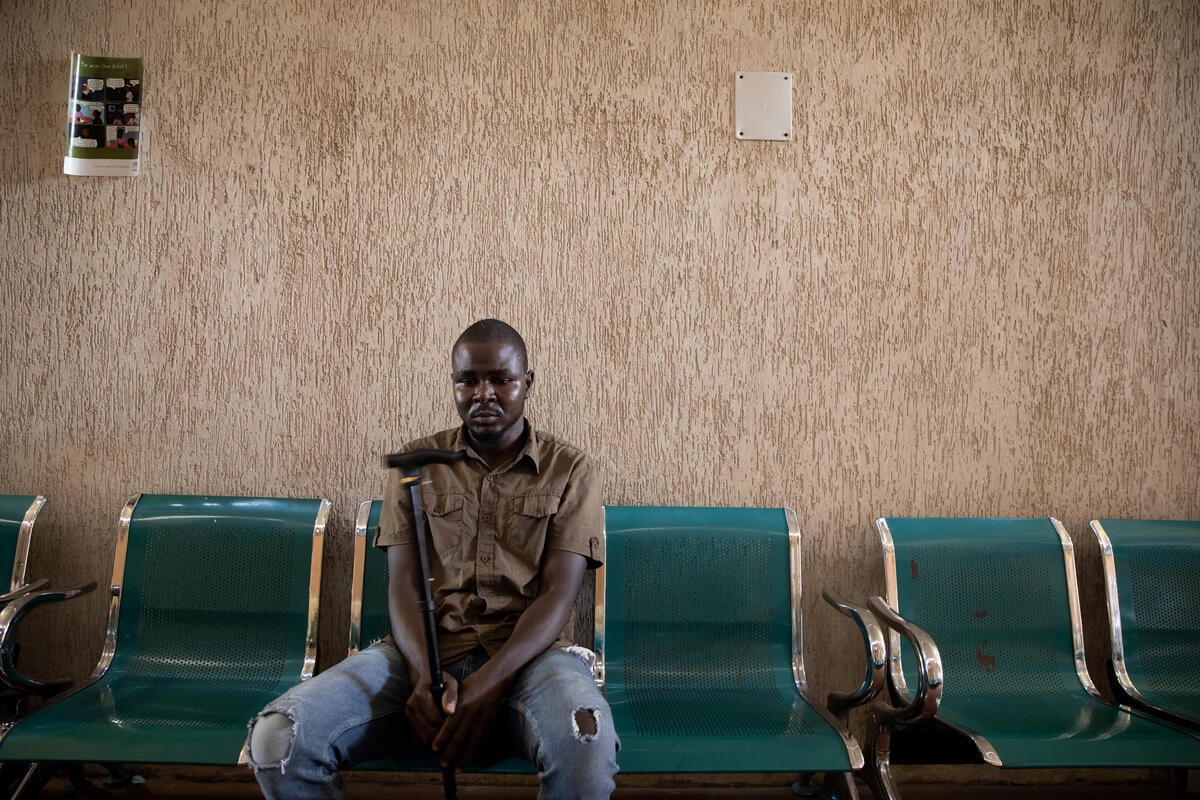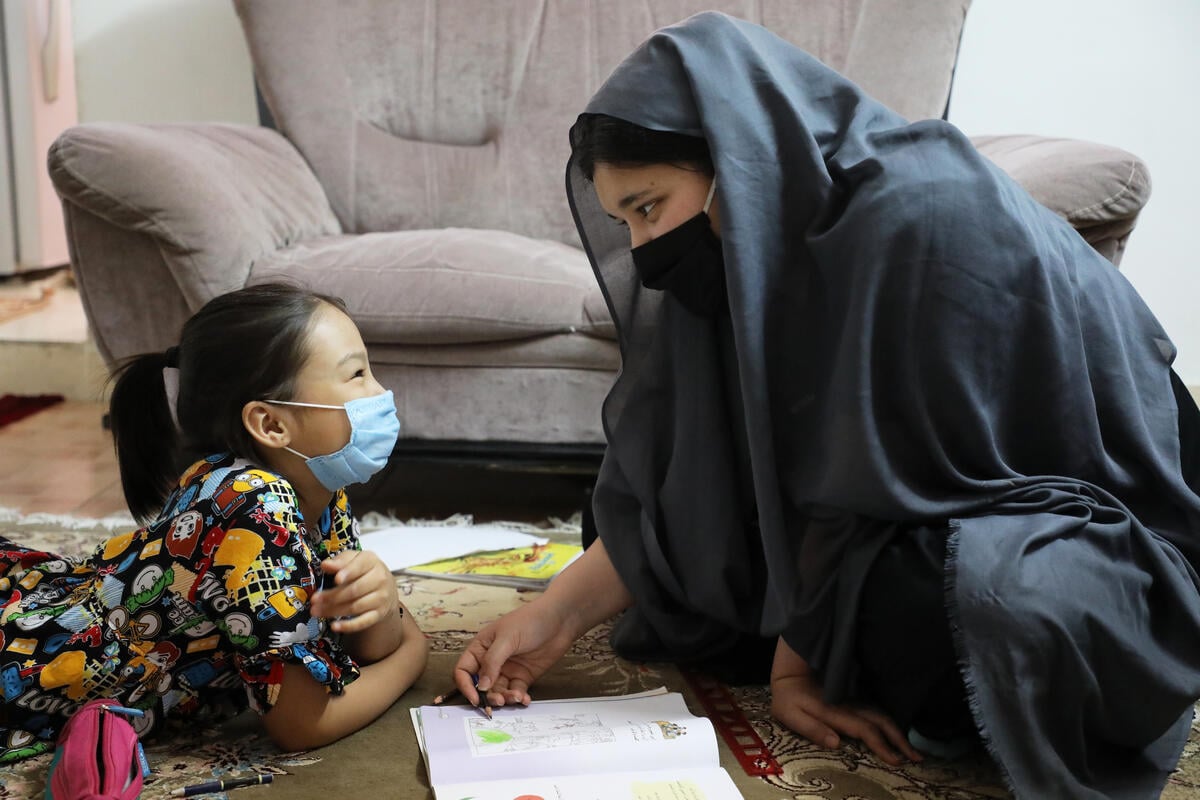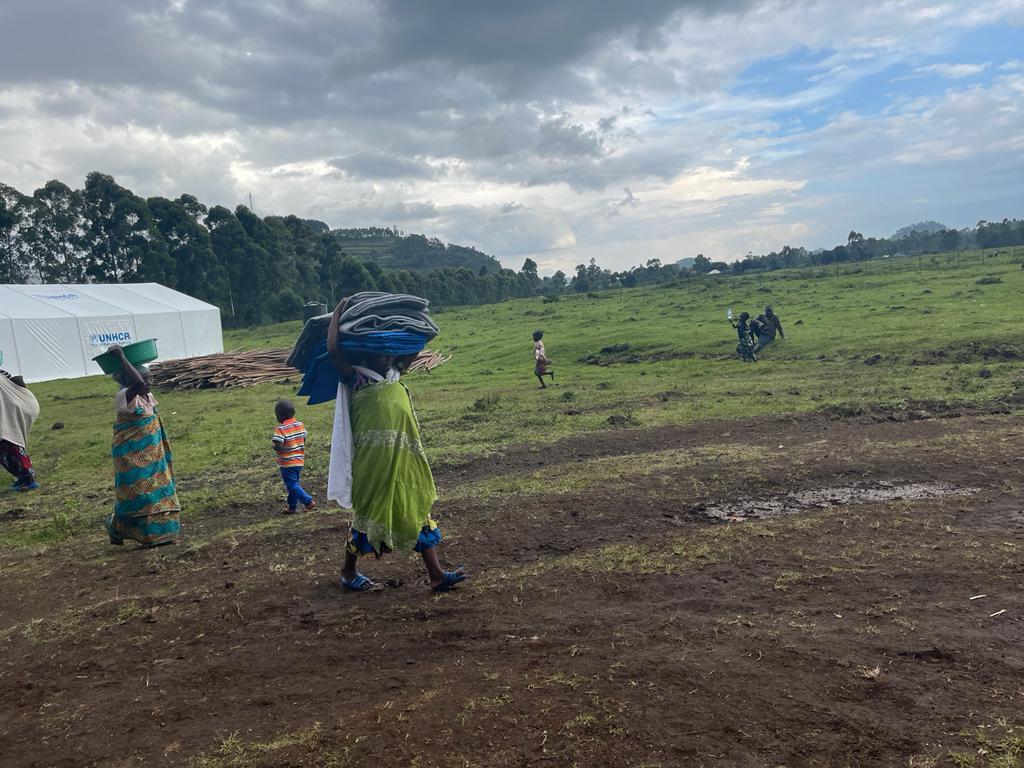South Africa cuts nearly 500 km off Zimbabweans' asylum journey
South Africa cuts nearly 500 km off Zimbabweans' asylum journey

MUSINA, SOUTH AFRICA, Aug. 7 (UNHCR) - For Absalom Moyo* the relief in getting his asylum seeker permit is obvious. "It's like a dream come true," exclaims Moyo, who recently entered South Africa illegally, fleeing violence in his native Zimbabwe.
"Receiving this so quickly has taken me by surprise and it has definitely made up for the horrible experience I went through when coming to South Africa," he says, displaying the permit he says has allowed him to relax and not always be on his guard.
Moyo is one of hundreds of Zimbabweans to recently benefit from a Department of Home Affairs' (DHA) initiative to process Section 22 asylum seeker permits in Musina, just 12 kilometres away from the Beit Bridge crossing where so many force their way through a weak link in the border fence town to enter South Africa illegally. Previously they risked arrest or deportation as they made their way 500 kilometres or more to Pretoria or Johannesburg to register.
"What we saw here as increasing numbers of Zimbabweans came into the town in need of international protection was that there was an urgent need for improvement in access to the asylum procedures," explains Camilla Kragelund, UNHCR Protection Officer assigned to Musina.
Just ask Moyo what a typical asylum seeker has to go through. He fled threats to his life at the hands of Zimbabwe's Zanu PF youth in recent weeks, only to run into more torment moments after his illegal "border jumping."
Like many Zimbabweans crossing illegally into South Africa through vast tracts of bush, Moyo fell victim to the notorious Gumaguma gangs - groups of marauding armed men bent on exploiting the vulnerability of their countrymen and women. Moyo was set upon by seven Gumaguma who stripped him of what valuables he had hidden on his person.
"They gave me some old shoes and an old maize meal sack to wear to continue my journey to Musina," he recalls with anger and frustration. "All my money including $57 U.S. and a few Zimbabwe dollars, gone just like that!"
Moyo's dignity was somewhat restored by a sympathetic vegetable stall owner who took pity on him as he approached the town of Musina and gave him a pair of trousers and a shirt. He then lay low at the Anglican Church in Nancefield, a township some 3 kilometres outside Musina, to avoid detection, arrest and deportation at the hands of the South African police and immigration officers before getting his asylum seeker permit.
He was fortunate to be able to get it in Musina, though. Previously asylum seekers entering South Africa through Beit Bridge had to go to Pretoria, 500 kilometres away, to apply for refugee status.
"That's far if you've come here with nothing and it's really far if you've entered the country illegally and don't have any documentation at all," says UNHCR's Kragelund.
Refugees and asylum seekers travelling to Pretoria or Johannesburg have always been at a very high and very real risk of being arrested and deported. UNHCR has long advocated for improved and easier access to asylum procedures in Musina, and with an increase in arrivals of Zimbabweans in Musina, the DHA opened a refugee reception office in July this year.
"They responded remarkably quickly," says Kragelund. Four refugee reception officers and four refugee status determination officers were recruited from Pretoria and Johannesburg and in a matter of three working days they had established a functional office that started processing asylum applications.
"It was impressively fast and what we've seen since then is that they can process about 300 asylum applications per day," adds Kragelund. "It's quite a high turnout and they're working very efficiently."
The only concern for UNHCR at this point is that the asylum system in Musina is being clogged by people who do not qualify for refugee status.
"There are people who have lived in Musina for a number of years who are not refugees," says Kragelund. "They have not fled persecution, but arrived in South Africa several years ago, seeking employment. Many don't have legal status and they're trying to use the asylum system to legalise their stay in the country."
Moyo considers himself one of the lucky few. Making his way to the Nancefield Roman Catholic Church where he hopes to receive a blanket and a food parcel, courtesy of the UN Refugee Agency, he is already planning his next move.
"Now I need to find a piece job to make some money," he says walking energetically to the church. "It will mean I can try and continue with my life maybe in Johannesburg or Cape Town!"
* Name changed for protection reasons.
By Pumla Rulashe in Musina, South Africa








